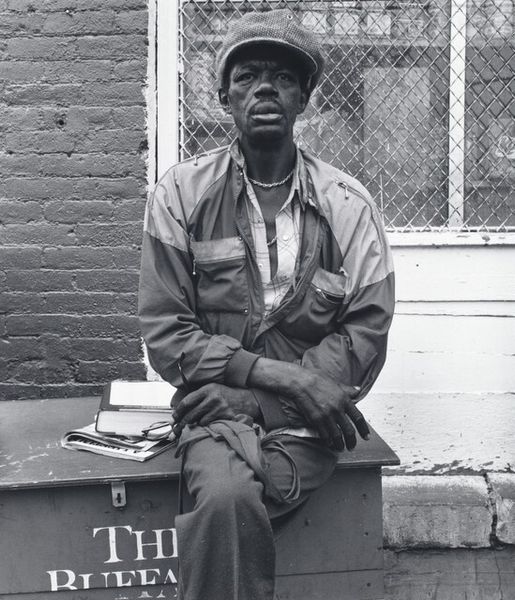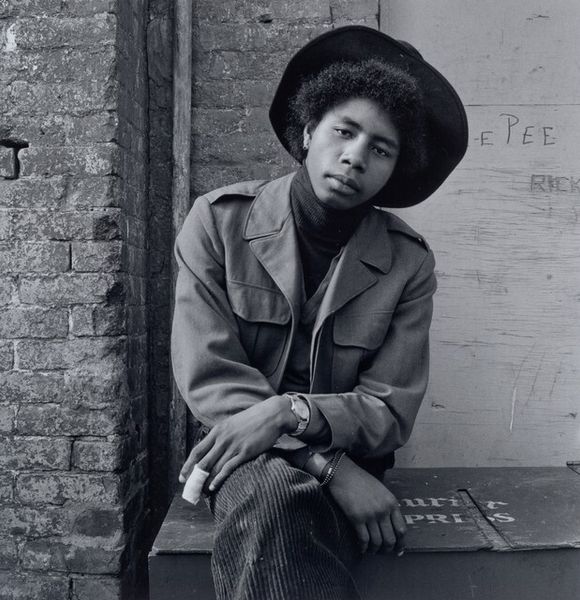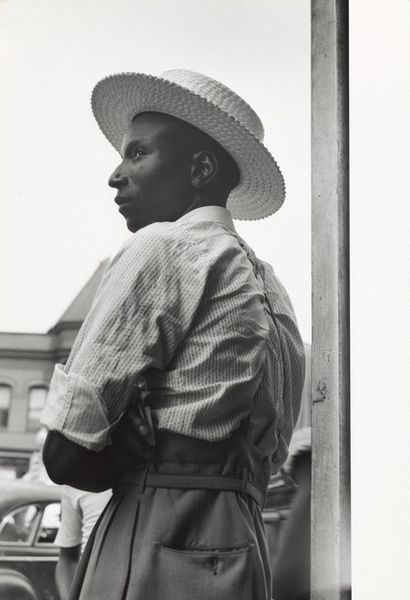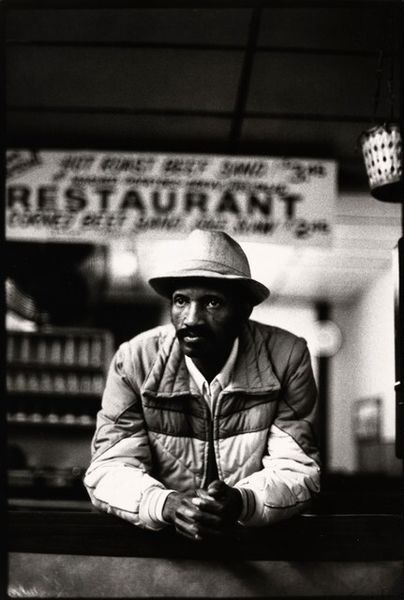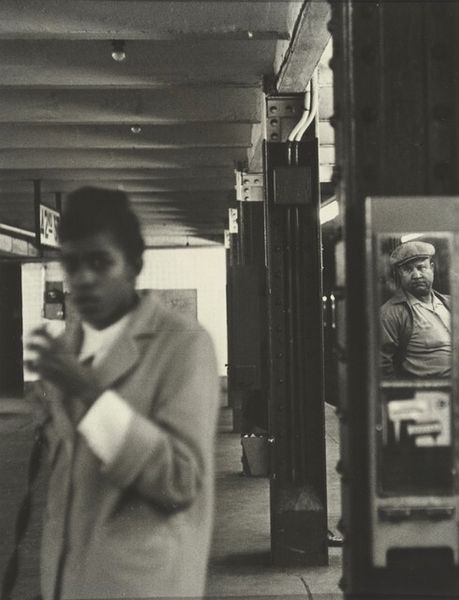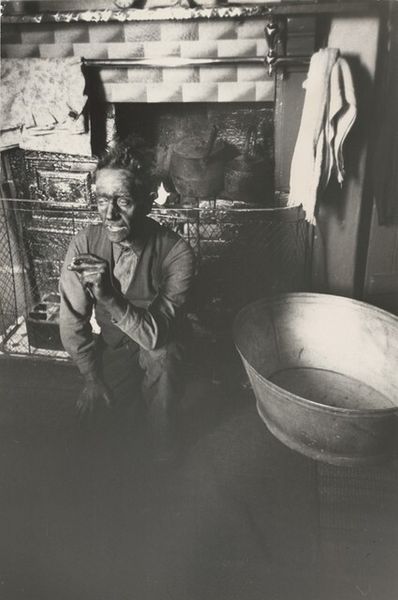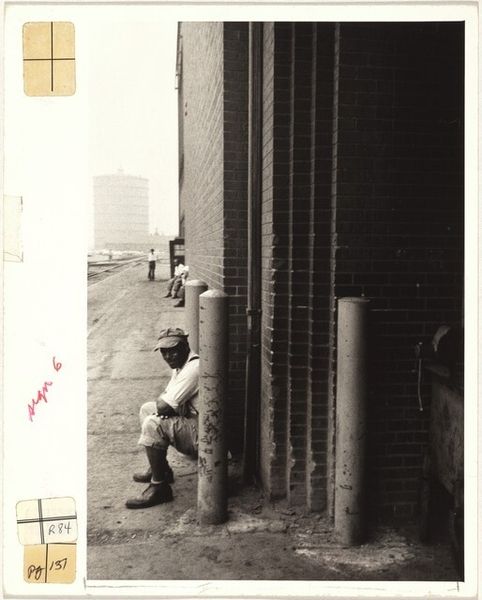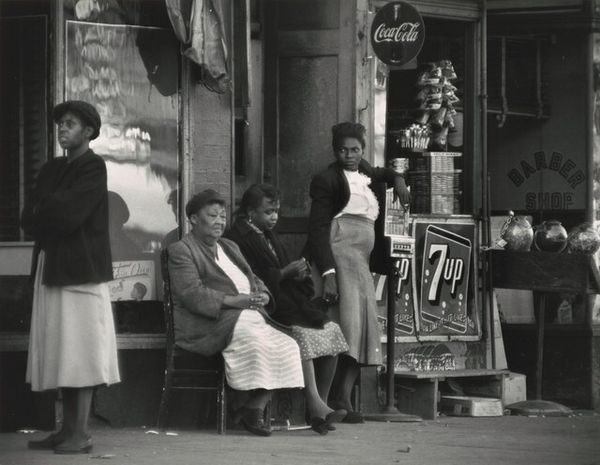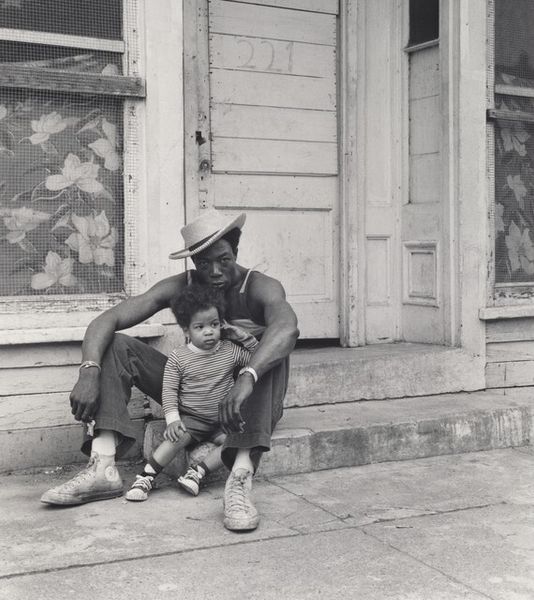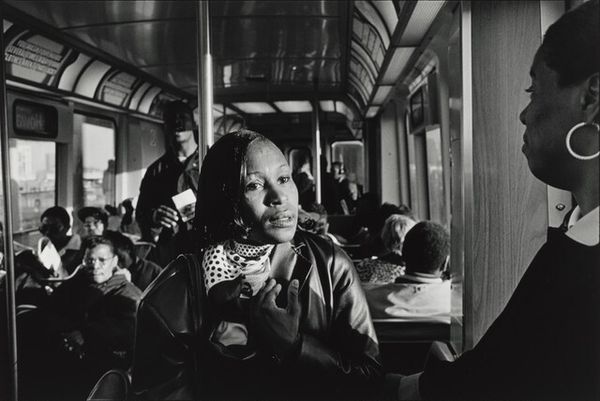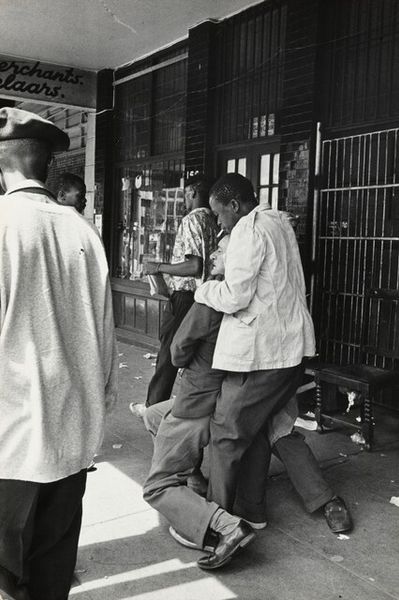
photography, gelatin-silver-print
#
portrait
#
african-art
#
black and white photography
#
street shot
#
harlem-renaissance
#
outdoor photograph
#
outdoor photo
#
black and white format
#
social-realism
#
street-photography
#
photography
#
historical photography
#
black and white
#
gelatin-silver-print
#
monochrome photography
#
street photography
#
outdoor activity
#
realism
Dimensions: image: 18.1 x 17.5 cm (7 1/8 x 6 7/8 in.) sheet: 25.2 x 20.3 cm (9 15/16 x 8 in.)
Copyright: National Gallery of Art: CC0 1.0
Curator: We’re looking at Milton Rogovin's gelatin-silver print from 1974, titled "Samuel P. 'Pee Wee' West (Lower West Side series)." Editor: Right away, I feel a certain...world-weariness emanating from this man. A casual pose, almost slouched, but his eyes are so direct. It's an honest weariness, though, not defeated. Curator: Absolutely. Rogovin focused on working-class communities, particularly in Buffalo, New York. This image, part of a larger series, exemplifies his social-realist approach. The Lower West Side was a vibrant, multi-ethnic, but often overlooked part of the city. Editor: I'm drawn to the texture. The rough brick, the worn leather of his jacket... it all speaks to a life lived in a very physical way. You can almost feel the weight of his coat. And see the materials all being used as insulation against, I assume, the Buffalo windchill! Curator: Consider Rogovin’s own background; an optometrist who became deeply invested in documenting social conditions, particularly the impacts of deindustrialization. His materials--gelatin-silver--chosen because of its capacity to capture details. This wasn't just about aesthetics; it was about giving visibility. Note the signage next to him. A defunct Latino newspaper sign, a liquor sign - all remnants of commerce. Editor: It's funny, that newspaper sign in the background – "Latin Journal" – almost looks like a ghostly headline hovering there. It lends the photograph a sense of place and displacement, like the world's shifting beneath his feet, maybe? Rogovin found something compelling, even beautiful, in this decay, right? The subject is literally and figuratively holding up this structure. Curator: Yes, the image highlights the physical presence of Samuel against that backdrop, the means by which commerce is memorialized even if in disuse; a reflection of labor's enduring presence. Rogovin’s perspective invites consideration about class, race, representation. His lens turns toward people routinely ignored by other institutions of power. Editor: It makes you wonder about Pee Wee himself. What were his dreams? What were his struggles? He's such a striking figure, imbued with so much unseen narrative. I'd really like to know the full story of Pee Wee in Buffalo! Curator: Rogovin sought precisely that reaction; this gelatin print does not propose simple or knowable subjects; instead, we receive a material document demanding respect for an individual life intersecting material surroundings and complex histories. Editor: Beautifully said. It’s a somber image that nonetheless hums with life, a life deserving to be seen and remembered.
Comments
No comments
Be the first to comment and join the conversation on the ultimate creative platform.
